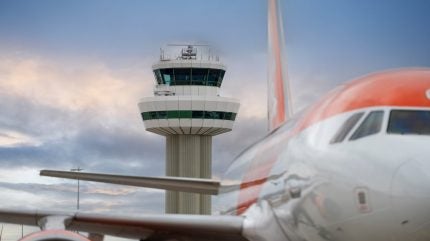

NATS, the UK’s main ATC provider, has implemented an advanced aircraft separation system at London’s Gatwick Airport, which reduces carbon emissions and supports on-time performance.
Claimed to be the world’s “first” for a single-runway airport, the system utilises time-based intervals to separate incoming flights, rather than the conventional fixed distances.
The shift to dynamic time-based spacing is designed to maintain consistent landing rates and optimise runway efficiency, particularly in strong winds.
According to NATS, this advancement will bolster the resilience of Gatwick’s operations, leading to fewer delays and shorter holding times for aircraft.
The anticipated decrease in airline fuel consumption is expected to result in savings of between 11,000t and 19,000 tonnes of CO2 annually.
London Gatwick chief operating officer Mark Johnston said: “This leading technology will provide more reliable landing times for our aircraft and will minimise delays, which is good news for our passengers.
“With aircraft also spending less time holding in the air, fuel burn and emissions are also predicted to reduce significantly, which remains an important, ongoing focus for the airport.”
During strong headwinds, aircraft typically experience slower ground speeds, which can extend the time between arrivals.
The traditional method of maintaining set distance intervals can decrease landing rates, potentially causing operational disruptions.
By adopting dynamically calculated time-based spacing, air traffic controllers can now safely reduce the gaps between arriving aircraft to sustain landing rates, even in adverse wind conditions.
The deployment of the Intelligent Approach tool, co-developed by NATS and Leidos, has been crucial in the development of the separation system, according to NATS.
Modified for Gatwick’s single runway ‘mixed mode’ operations, the tool factors in live wind conditions and the necessary time for departing aircraft to vacate the runway.
It provides air traffic controllers with precise radar markers to sequence incoming flights efficiently, thus improving overall resilience and reducing delays.
The Intelligent Approach system has already demonstrated success at other major airports, including Heathrow, where it has reduced headwind delays by 62%, Toronto Pearson and Amsterdam Schiphol airports.
The research underpinning the time-based separation system was conducted by NATS as part of the EU’s Single European Sky ATM Research (SESAR) Programme.
NATS Airspace and Future Operations director Chris Norsworthy said: “Introducing Intelligent Approach at London Gatwick is another world first from the project team and evidence of the value of our partnership with the airport.
“Delivering greater operational resilience for London Gatwick will make a real positive difference to airline punctuality, helping to improve the passenger experience, reduce the risk of late running or cancelled flights and cut carbon emissions.”
In December 2024, NATS Services extended its contract with the Airport Authority Hong Kong to continue the secondment of air traffic controllers at Hong Kong International Airport until 2029, building on their partnership that began in 2018.








